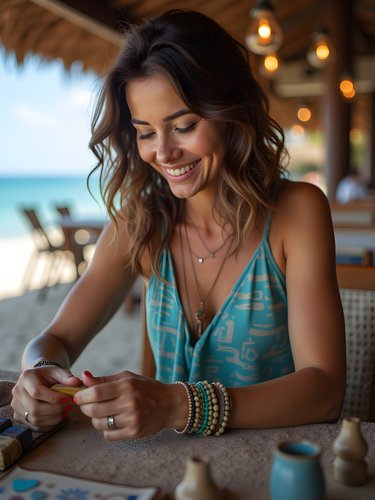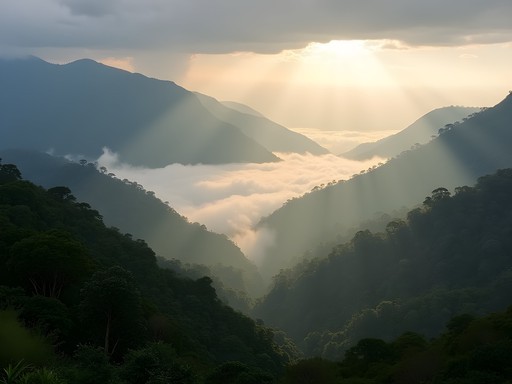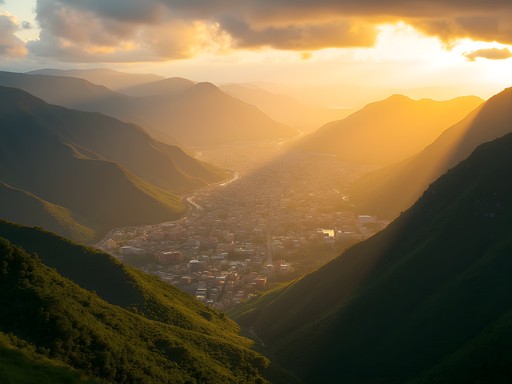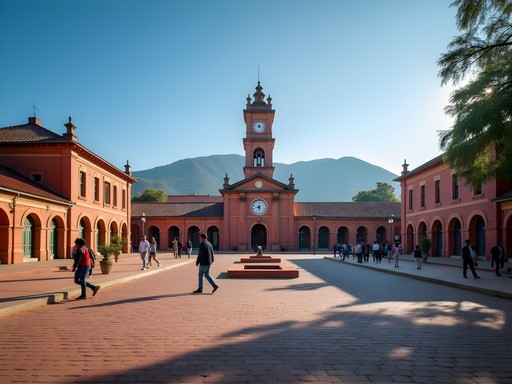Disclosure: This article contains affiliate links. We may earn a commission from purchases at no extra cost to you, which helps our travel content.
The first time I stood atop the misty peaks of the Bvumba Mountains, watching clouds roll beneath my feet like ocean waves across the Mozambique border, I understood why locals call them the 'Mountains of the Mist.' As a traveler who's explored deserts from the American Southwest to Morocco, I found something uniquely captivating in these verdant Zimbabwe highlands. The Bvumba range near Mutare offers a perfect blend of challenging trails, rich biodiversity, and cultural encounters that make it ideal for the solo traveler seeking both adventure and reflection. While I typically travel with my two children, this particular journey was a rare solo expedition that reminded me why sometimes venturing alone creates space for deeper connections with both nature and self. This guide shares everything I learned during my week exploring these mystical mountains, from trail recommendations to cultural insights that will enhance your Bvumba adventure.
Understanding the Bvumba Mountains: Location and Significance
Located just 25km southeast of Mutare in Zimbabwe's Eastern Highlands, the Bvumba Mountains rise dramatically to 1,911 meters (6,270 feet) at their highest point, Castle Beacon. What makes this range special isn't just its height but its ecological uniqueness - a montane forest ecosystem that harbors rare plant and animal species found nowhere else in the region.
As a public defender who's worked with clients from diverse backgrounds, I've learned to appreciate how landscapes shape cultures. The Bvumba is no exception. These mountains have deep cultural significance for local Shona communities, with numerous sacred sites scattered throughout. During my visit, I was fortunate to speak with a local elder who explained how certain forest groves serve as traditional gathering places for important community decisions and ceremonies.
The mountains also mark the Zimbabwe-Mozambique border, creating fascinating cross-cultural exchanges that have influenced everything from local cuisine to architectural styles in nearby villages. This border position gave the region strategic importance during Zimbabwe's liberation struggle, and hiking guides can point out historically significant locations from this period.
What surprised me most was the microclimate created by the mountains - while Mutare might be experiencing typical winter temperatures, the Bvumba can be significantly cooler with frequent mist rolling through, creating an almost mystical atmosphere that changes by the hour.

💡 Pro Tips
- Learn a few basic Shona greetings before visiting - locals appreciate the effort and it opens doors to more authentic interactions
- The mountains are locally known as 'Bvumba' (not 'The Bvumba') - using the correct terminology shows respect
- Cell service is spotty in the mountains - download offline maps before heading out
Essential Hiking Trails: From Beginner to Advanced
The Bvumba Mountains offer a remarkable diversity of trails that cater to various skill levels. During my week-long adventure, I tackled several routes, each revealing different facets of this extraordinary ecosystem.
Bunga Forest Trail (Beginner): This 4km loop through indigenous forest is perfect for acclimatizing to the altitude. The well-marked path takes about 2 hours and offers excellent birdwatching opportunities. I spotted the rare Swynnerton's Robin here, a treat for any birding enthusiast. The trail also features informational plaques about local flora, making it educational as well as beautiful.
Cecil Kop Nature Reserve Trails (Intermediate): Located on the outskirts of Mutare, these interconnected trails offer stunning city views and diverse terrain. The 7km Leopard Rock Circuit was my favorite, requiring about 3-4 hours with moderate elevation gain. Pack a substantial lunch and plenty of water - I was grateful for my hydration pack which kept me hydrated throughout the day without having to stop constantly for water breaks.
Manchester to Burma Valley Trek (Advanced): This challenging 14km point-to-point trail requires arrangements for pickup at the endpoint but rewards hikers with spectacular views across the border into Mozambique. The trail climbs through changing vegetation zones, from dense forest to rocky outcrops. This is a full-day commitment requiring early departure and solid navigation skills.
Castle Beacon Summit Trail (Advanced): The most challenging but rewarding hike leads to the highest point in the range. This 10km round trip involves significant elevation gain and some scrambling near the top. I started at dawn with my headlamp illuminating the path, which allowed me to reach the summit for a spectacular sunrise over the misty valleys below. The early start also meant I encountered more wildlife, including a family of Samango monkeys.

💡 Pro Tips
- Even in winter, start hikes early to avoid afternoon thunderstorms that frequently roll in
- Hire a local guide for the more advanced trails - they provide safety and share fascinating cultural knowledge about the mountains
- Trails can become slippery after rain - trekking poles are invaluable for stability
Wildlife Encounters: What to Watch For
The Bvumba Mountains harbor an astonishing array of wildlife, particularly for birdwatchers and butterfly enthusiasts. As someone who's explored ecosystems from Arizona to the UAE, I was genuinely impressed by the biodiversity concentrated in these highlands.
Birding Paradise: The mountains are home to over 300 bird species, including several rarities that attract ornithologists worldwide. The Swynnerton's Robin, Chirinda Apalis, and Roberts' Warbler are among the special birds to watch for. I spent a magical morning at Bunga Forest with my binoculars which provided exceptional clarity even in the dim forest light. The best birding spots include the Bunga Forest and the botanical gardens near Cecil Kop.
Primates and Small Mammals: The Samango monkey (a rare subspecies of Blue Monkey) is perhaps the most charismatic resident of the Bvumba. Unlike the more common vervet monkeys, Samangos prefer dense forest canopy and are shier around humans. Early morning hikes offer the best chance of spotting them. I also encountered bushbabies near my accommodation at dusk and the occasional tree hyrax (though you'll more likely hear their distinctive calls than see them).
Reptiles and Amphibians: The mountains support numerous chameleon species, including the rare Marshall's Leaf Chameleon - one of the world's smallest reptiles at just a few centimeters long. During night walks with local guides, we spotted several species of frogs around forest streams, their chorus providing a natural soundtrack to the evenings.
Butterflies: The Bvumba is known as one of Africa's premier butterfly watching destinations, with over 400 species recorded. The most spectacular time is during summer (November-February), but even in winter, I observed dozens of species, including the magnificent Emperor Swallowtail and various charaxes butterflies feeding on tree sap along forest trails.

💡 Pro Tips
- Dawn and dusk offer the best wildlife viewing opportunities - adjust your hiking schedule accordingly
- Move quietly on trails and wear earth-toned clothing to increase wildlife sighting chances
- Bring a small notebook to record species sightings - local conservation efforts value citizen observations
Cultural Immersion: Connecting with Local Communities
As a public defender who values cultural understanding, connecting with local communities is always a priority in my travels. The Bvumba region offers rich opportunities for authentic cultural exchange that enhance the hiking experience.
Village Visits: Several communities on the mountain slopes welcome respectful visitors. I spent an afternoon in a small village near Burma Valley where I was invited to join a family for sadza (traditional cornmeal staple) and muriwo (greens). These informal visits often happen organically when hiking through areas between official trails - a simple greeting can lead to meaningful conversations.
Traditional Craft Workshops: In Mutare and surrounding communities, artisans continue traditions of wood carving, basket weaving, and pottery. I participated in a basket weaving workshop arranged through my guesthouse, learning techniques passed down through generations. Not only did I gain appreciation for the skill involved, but the proceeds supported a women's cooperative.
Local Guides as Cultural Bridges: Hiring a local guide provides more than just trail navigation - it offers cultural context that transforms a hike into a deeper learning experience. My guide, Tendai, shared stories of how specific mountain features figure into local folklore and pointed out medicinal plants still used by traditional healers. His knowledge of both natural and cultural heritage made each hike more meaningful.
Community Conservation Initiatives: Several communities around the Bvumba are involved in conservation projects that welcome visitor participation. I spent half a day helping with a tree-planting initiative organized by a local environmental group. These experiences provide insight into how communities are addressing environmental challenges while creating sustainable livelihoods.
One evening, I was fortunate to witness a traditional music performance featuring mbira (thumb piano) and percussion instruments. The rhythms and harmonies echoed through the misty mountains, creating a profound connection to place that no standard tourist experience could match.

💡 Pro Tips
- Learn to say 'thank you' (tinotenda) in Shona - small language efforts are greatly appreciated
- When visiting villages, bringing small gifts like tea or school supplies is appreciated but not expected
- Ask permission before photographing people or cultural activities
Accommodation Options: From Rustic to Refined
The Bvumba region offers surprisingly diverse accommodation options that cater to different preferences and budgets. As someone who typically travels with children but was exploring solo this time, I appreciated the range of choices available.
Eco-Lodges in the Mountains: Several small eco-lodges are nestled within the mountains themselves, offering the most immersive experience. I spent three nights at Cloudlands Lodge, a sustainable property with solar power and rainwater harvesting. The simple cabins feature large windows that frame misty mountain views, and falling asleep to the sounds of the forest was magical. Most eco-lodges include home-cooked meals featuring local ingredients, which I found to be a highlight.
Historic Hotels: The colonial-era Inn of the Mountains offers a glimpse into the region's past with its manicured gardens and afternoon tea tradition. While the vintage charm is undeniable, I found myself more drawn to locally-owned accommodations that better reflect contemporary Zimbabwe.
Guesthouses in Mutare: For those preferring to base themselves in town, Mutare offers several quality guesthouses at reasonable prices. I spent two nights at Murambi Garden Lodge, which provided a comfortable base with reliable hot water (welcome after long hikes) and excellent breakfast. The staff helped arrange transportation to trailheads and offered valuable local advice.
Camping Options: Budget travelers can utilize the basic but well-maintained campsite at Cecil Kop Nature Reserve. I spent one night camping here to experience the mountains under starlight. My 3-season tent provided perfect shelter for the cool mountain nights. The campsite has basic facilities including water and pit toilets, but you'll need to bring all your supplies.
Whichever accommodation style you choose, book well in advance during the popular May-September period when clear skies and moderate temperatures draw more visitors to the region.

💡 Pro Tips
- Pack layers for mountain accommodations - temperatures can drop significantly at night even in lodges
- Many mountain lodges have limited or no electricity after certain hours - bring a headlamp or flashlight
- Accommodations in the mountains themselves often require 4x4 vehicles to access - arrange transportation in advance
Practical Planning: Weather, Safety, and Logistics
Planning a successful Bvumba adventure requires understanding the region's unique characteristics and preparing accordingly. My legal background makes me naturally detail-oriented, and I've found this serves me well when planning trips to more remote destinations.
Weather Considerations: The Bvumba's microclimate can be unpredictable even during the dry winter season (May-September). Days typically range from 15-22°C (59-72°F), but temperatures can drop below 10°C (50°F) at night. The mountains create their own weather patterns, with mist rolling in suddenly even on clear days. I packed lightweight layers that could be added or removed as conditions changed throughout the day. A waterproof jacket is essential year-round, as is sun protection for when the clouds clear.
Safety Protocols: While the Bvumba region is generally safe for travelers, standard precautions apply. I registered my hiking plans with my accommodation each day and carried a basic first aid kit for minor injuries. Cell service is limited in the mountains, so don't count on being able to call for help. Hiking with a companion or guide is recommended, especially on more remote trails. I also carried a personal locator beacon for emergency communication in areas without cell coverage.
Transportation: Mutare is accessible by bus or private vehicle from Harare (about 3-4 hours). Once in Mutare, you'll need transportation to trailheads and accommodations. Options include: - Hiring a local driver (most cost-effective for solo travelers) - Renting a vehicle (preferably 4WD for mountain roads) - Arranging transfers through your accommodation
I used a combination of these approaches, hiring a driver for the more remote trailheads and using local transportation where available.
Permits and Guides: Some areas require entry permits or mandatory guides. Cecil Kop Nature Reserve charges a small entry fee, while access to certain community-managed forests requires permission from local authorities. Your accommodation can usually help arrange these details. Hiring a guide costs approximately $20-30 per day and provides not just safety but enriches the experience with local knowledge.

💡 Pro Tips
- Create a detailed itinerary and share it with someone at home and your local accommodation
- Carry more water than you think you'll need - the combination of altitude and exercise increases hydration needs
- Download the Maps.me app and the Zimbabwe region before your trip for reliable offline navigation
Final Thoughts
The Bvumba Mountains represent everything I value in travel - challenging physical experiences balanced with cultural insights and environmental awareness. As I stood watching that final sunset paint the mist-filled valleys in gold and purple hues, I reflected on how these mountains had offered so much more than just hiking trails. They provided a window into Zimbabwe's rich natural heritage and the resilience of communities adapting to changing times while honoring traditions.
Whether you're seeking challenging summit hikes, rare wildlife encounters, or meaningful cultural exchanges, the Bvumba delivers with an authenticity increasingly rare in our over-touristed world. As a solo traveler, I found these mountains offered both adventure and contemplative spaces - a perfect balance that rejuvenated my spirit before returning to my work and family responsibilities. I hope this guide inspires you to explore this remarkable corner of Zimbabwe, treading lightly and opening your heart to the magic of the Mountains of the Mist.
✨ Key Takeaways
- The Bvumba Mountains offer diverse hiking experiences suitable for intermediate solo travelers seeking both adventure and cultural insights
- Hiring local guides enhances both safety and understanding of the region's ecological and cultural significance
- Winter (May-September) provides the most reliable weather conditions for hiking, though prepared travelers can visit year-round
- Connecting with local communities through workshops, village visits, and conservation initiatives creates a more meaningful travel experience
📋 Practical Information
Best Time to Visit
May-September (dry winter season)
Budget Estimate
$50-100 per day including accommodation, food, and activities
Recommended Duration
5-7 days
Difficulty Level
Intermediate
















Comments
sunsetperson
Just got back from Mutare last week and your post is giving me serious nostalgia! The Bvumba Mountains were the highlight of my Zimbabwe trip. That section about wildlife encounters is spot on - we saw the blue monkeys and a couple of rare bird species our guide pointed out. One tip for future travelers: the weather changes FAST up there. We started in sunshine and ended up in thick mist within an hour. Layers are essential! Also, the small craft market in the nearest village had the most beautiful wood carvings. The cultural immersion part of the trip really made it special. Thanks for bringing back such great memories with your post!
adventurelife1861
Did you stay in Mutare or closer to the mountains? Trying to figure out the best home base for hiking.
sunsetperson
We stayed at a small lodge right near the mountains - much better than commuting from Mutare daily. The morning views alone were worth it! Plus the owner made amazing homemade bread for breakfast.
oceanbuddy
This looks amazing! Did you hire a local guide or is it possible to navigate the trails independently? Also curious about safety - any concerns when hiking there?
sunsetperson
I hiked there in January and definitely recommend getting a guide for your first time. Our guide Tony knew all the hidden viewpoints and pointed out wildlife we would've missed. Plus he shared amazing stories about local traditions. Worth every penny!
Fatima Sims
This brought back such vivid memories! I hiked the Bvumba Mountains during the rainy season three years ago - a bit challenging but the vibrant greenery was worth it. The mist gave everything this ethereal quality that my photos couldn't fully capture. The cultural aspect Savannah mentioned is spot-on too. I spent an afternoon with a local family who showed me how they harvest honey from traditional hives. They shared their homemade sadza with me while explaining how the mountains factor into their spiritual beliefs. It was one of those profound travel moments that stays with you. For anyone going, I highly recommend visiting the botanical gardens too - they're small but incredibly diverse with plants you won't see elsewhere. The transition between different ecological zones as you climb is fascinating for any nature lover.
Savannah Torres
Fatima! So glad you chimed in. Your rainy season perspective is valuable - I was there in the dry season. That honey harvesting experience sounds incredible. Did you try the Vumba cheese while you were there? It's another local specialty worth seeking out.
Fatima Sims
I did try the cheese! That little dairy farm is such a surprise find in Zimbabwe. The gouda-style one was my favorite. Now I'm craving it again!
roamphotographer
How common are wildlife encounters on these trails? Any safety concerns with larger animals?
starexplorer
Not the author but when I went, we mostly saw monkeys and birds. No large predators on our trip. The guides said leopards are in the area but extremely rare to spot and they avoid humans.
Marco Flores
Savannah, your description of standing above the clouds took me right back to my trek there last year! The Bvumba truly lives up to its name as the 'Mountains of the Mist.' For anyone planning to go, I'd highly recommend the Bunga Forest trail at sunrise - the light filtering through the forest canopy creates this otherworldly atmosphere that's perfect for photography. Did you get a chance to visit the botanical gardens? The collection of orchids there is spectacular and makes for a nice recovery day after tackling the more challenging trails.
oceanbuddy
Hey Marco, how difficult would you say the trails are for someone with moderate hiking experience? I'm planning a trip but wondering if I need to train up beforehand!
Marco Flores
Hi oceanbuddy! With moderate experience, you'll be fine on most trails. The Cecil Kop Nature Reserve paths are well-marked and manageable. For the more challenging routes like the Burma Valley overlook, just bring plenty of water and take it slow. The elevation isn't extreme, but the humidity can make it feel more strenuous. My hiking poles were super helpful on the steeper sections!
adventurelife1861
Those misty mountain views look absolutely incredible! Adding this to my bucket list ASAP!
greengal9015
That photo of the clouds below the mountain peak is STUNNING!!! 😍 Exactly the kind of views that make all the effort worthwhile! Did you use a special camera or just your phone? The colors are amazing!
Savannah Torres
Just my phone actually! The natural lighting at dawn did all the work. I was lucky with perfect conditions that morning!
greengal9015
Wow, that's impressive! Sometimes the best shots happen when nature does the heavy lifting. Can't wait to see it in person someday!
starexplorer
Did this hike last year and can confirm it's as magical as Savannah describes. We saw several blue monkeys and a couple of rare bird species I'd never encountered before. One tip: the weather can change FAST up there. I used my waterproof backpack constantly as we went from sunshine to mist to light rain throughout the day. The local coffee from the small farms near the base of the mountains is incredible too - worth bringing some home!
skynomad
How difficult would you say the intermediate trails are? I'm reasonably fit but haven't done serious hiking in a couple years. Wondering if I should stick to beginner routes or push myself.
Savannah Torres
The intermediate trails have some steep sections but nothing technical. If you're reasonably fit, you should be fine! Just bring plenty of water and start early to avoid afternoon heat. The Chinyakwaremba Trail is a good one to test yourself on.
Taylor Moreau
I had the pleasure of visiting the Bvumba Mountains last year during a business trip to Harare. Took an extra few days to make the journey to Mutare and it was absolutely worth it. The Cecil Kop Nature Reserve section was particularly impressive. I found hiring a local guide made all the difference - they pointed out flora I would have completely missed. The Burma Valley viewpoint offers spectacular photography opportunities for those willing to make the climb. Savannah, did you stay at the Leopard Rock Hotel or camp elsewhere?
Savannah Torres
Thanks for sharing your experience, Taylor! I actually split my time between camping near Bunga Forest and one splurge night at Leopard Rock. The contrast was part of the adventure!
Taylor Moreau
Smart approach! That hotel's colonial architecture is something to see, but camping definitely gets you closer to the mountain experience.
Venture X
Premium card with 2X miles, $300 travel credit, Priority Pass